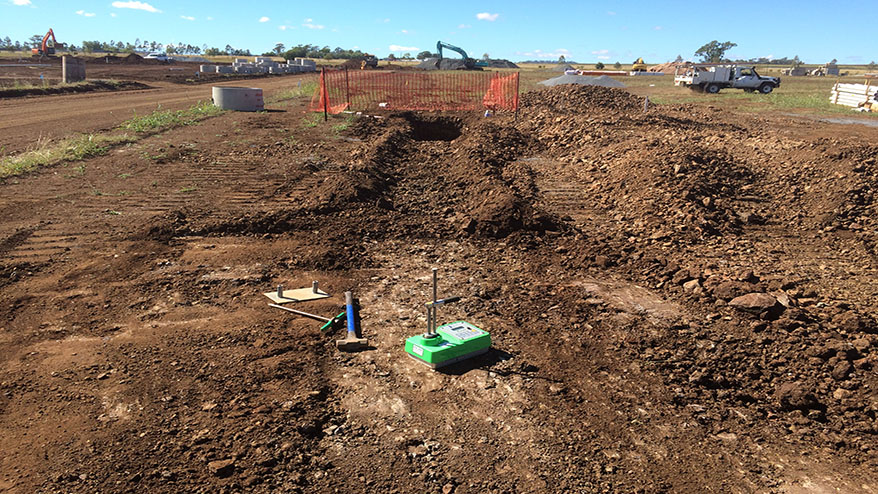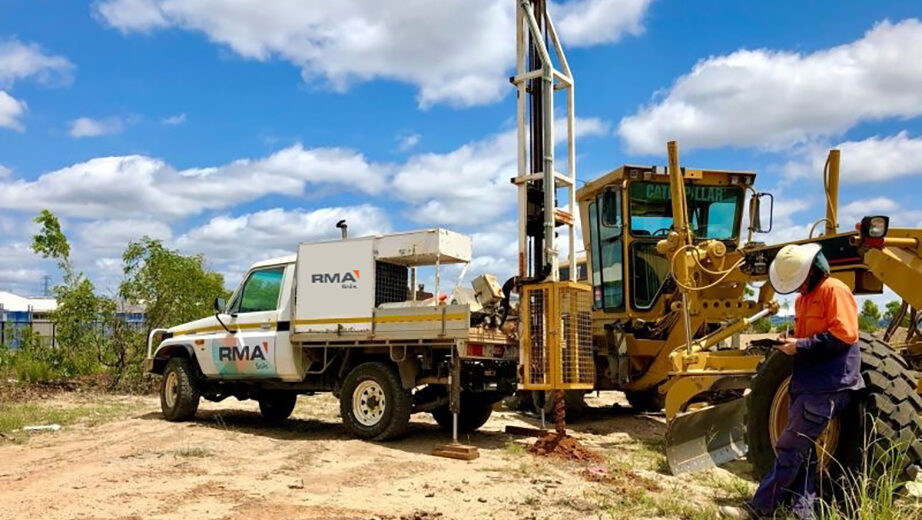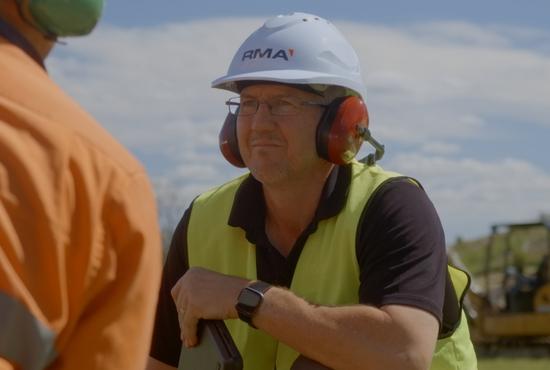



The California Bearing Ratio (CBR) test is used to measure the strength and load-bearing capacity of subsurface soil and base courses for road and highway pavements. The information garnered from the CBR test forms an important part of a geotechnical report, which is used by civil engineers when designing roads and highways.
In order to conduct this test, our geotechnical team use the CBR machine in our NATA-endorsed laboratory to penetrate a prepared sample and measure its resistance.
The CBR penetration test is conducted in a CBR machine, which is made up of a fixed, dual-column load frame that has an adjustable upper crossbeam and a lower platen which is checked at a pace rate of 1 mm per minute in vertical travel. A piston attached to a load cell penetrates the specimen and produces a load reading.
Laboratory samples are compacted into CBR moulds, submerged in water and loaded up with appendage weights prior to the test. The water is designed to replicate adverse moisture conditions from potential rainfall or flooding and the weights are designed to replicate the loads that will be built and carried on top of the soil and base courses.
In Australia the governing standard for CBR tests is AS 1289.6.1.1 “Methods of testing soils for engineering purposes – Soil strength and consolidation tests, Method 6.1.1: Determination of the California Bearing Ratio of a soil – Standard laboratory method for a remoulded specimen”.
CBR tests are conducted in the early stage of construction for the purpose of helping to inform civil design, and again once the pavement subgrade has been completed as a means of ensuring that the pavement design that has been constructed is adequate.

Concrete Compression Machines are used to determine compressive strength of a concrete sample (obtained from a construction site), whereby the sample is subjected to gradually increasing compressive forces until failure occurs.
Test samples of fresh concrete are taken at the time of pouring and compacted into moulds on site. In a typical concrete compression test, three cylindrical concrete samples are poured on site, prior to being retrieved and returned to our NATA-endorsed laboratory for curing. One sample is tested at 7 days and the remaining two samples are tested at 28 days. To test these samples, force is applied using the concrete compression machine until the cylinder cracks and the results are then recorded.
Essentially, these machines determine the maximum level of weight that can be applied to the concrete material in its hardened state before it fractures, as well as proving that the concrete material in question can withstand a greater load than it will have to carry when it’s in use at the construction site.
The concrete compressive strength test is essential for providing the engineering and construction teams crucial information on the strength and characteristics of the concrete, and how it ages over time. The information determined by the concrete compression machine is used to evaluate the condition of existing structures.
In Australia, these cylinder strength tests are the most common compressive strength testing procedure and are measured in accordance with the governing standard AS 1012.9 “Methods of testing concrete Compressive strength tests – Concrete, mortar and grout specimens”.
Concrete compression tests are conducted during the construction phase to ensure that the material that is being used to build structures is compliant with capability standards. Having this knowledge is key for decision-makers to ensure that construction projects meet safety regulations, time constraints and project budgets when designing and building concrete structures.

Nuclear density moisture gauges are testing devices that use nuclear radiation to measure the density and moisture content of compacted material. These gauges are typically used during the construction phase of projects during bulk earthworks, service trench backfilling and during the construction of roads and highways.
Test data is obtained using two separate radiation sources within the gauge itself, these include:
Photons emitted from the source penetrate the test material and are scattered back to the base of the gauge to give a final reading. In the density range of interest, the number of photons detected is inversely proportional to the material density.
Just like the medical and dental industries, there are strict rules set out by Queensland Health to obtain and use a radiation source. We take safety regulations incredibly seriously and work hard to adhere to all necessary standards, including:
As a field instrument, the nuclear density moisture gauge is the most efficient way to collect data to determine if the works being carried out on site during the construction stage are compliant with the specifications and standards as required by the project design.
In Australia, the common methods density testing of soils using Nuclear Gauge are:

Geotechnical drilling rigs are machines that vary widely in size and capability. They are designed to bore holes in the ground to help soil technicians retrieve samples of subsurface material (like soil and rock, for example) from representative levels below the proposed foundation, across various locations around the construction site. The depths of these holes vary from just below the surface to multiple metres deep depending on the project’s requirements.
Common geotechnical drill methods include solid stem and hollow stem open flight auger, wash bore (mud rotary), rotary percussive and rotary vibratory (sonic).
Geotechnical drilling rigs are used in the early pre-construction stage in order to ensure that the selected site is capable of withstanding the proposed structure for years to come.
Geotechnical drilling for soil sampling and rock coring is a critical element of a geotechnical investigation as it helps determine the subsurface ground conditions to provide necessary design parameters for structural engineering of the building foundations.
You will see us out and about in our mobile fleet of vehicle mounted drilling rigs early on in the project cycle, from project feasibility through to pre-construction. Our mobility means we’re able to provide greater depth of service to our clients right across Queensland and northern New South Wales. Once we extract soil and rock core samples, they are either analysed directly on site, or sent back to our NATA-endorsed laboratory to be analysed and tested.
To learn more about our dynamic and exciting industry, we welcome you to join our LinkedIn community where we’re sharing updates on our current and upcoming projects.
If you’d like to find out more about a career in geotechnical engineering and to keep an eye on upcoming job opportunities, check out the careers section on our website.
